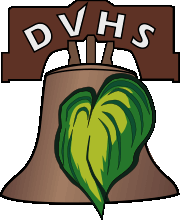
Click on a header for main topic, or hover and click on one of the drop-down topics.
Sign in and participate!

DELAWARE VALLEY
HOSTA SOCIETY
Our next activity will be a bus trip on May 4, 2024
More activities posted on our calendar!
Celebrating hostas since 1982!
The creation of a National Display Garden at the Barnes Foundation Arboretum
See the write-up of the garden in the Philadelphia Inquirer
What is the Barnes Foundation and how did we come to work with them?
The Barnes Foundation was established by Albert C. Barnes in 1922 to “promote the advancement of education and the appreciation of the fine arts and horticulture.” The original “campus” comprised a gallery and residence on a 12-acre property in Merion, Pennsylvania, just blocks from the city limits of Philadelphia. Over time, the gallery was filled with one of the finest private collections of art to be found in the world, and the grounds became one of the area’s finest arboreta. The last twenty years have been a period of significant and sometimes controversial change for the Foundation, resulting finally in the re-creation (with significantly expanded space) of the original gallery building on a new campus in central Philadelphia. It is truly a fascinating story.

The departure from the Merion campus has not resulted in neglect of the property. Instead, the firmer financial grounding of the Foundation after the move has led to a rejuvenation of the arboretum. It was, in this light, that the directors of the arboretum approached the Delaware Valley Hosta Society with an idea to add a hosta display garden, both as a feature to appeal to arboretum visitors and as a teaching aid for students in the Foundation’s horticultural programs.
The slide show below takes a look at the Merion campus. Note that clicking on a photo will open a full-size view.
Planning and planting
The Barnes Foundation Arboretum was a natural fit for the display garden mission of the DVHS. The property is well-maintained, with built-in irrigation and a staff of horticulturists. What the staff lacked was the knowledge of how to create a hosta display: which cultivars to choose, and how to properly plant and arrange them. Their garden director began work with our best garden designers on a plan. Very quickly a site for the display garden was chosen: the open wooded corner on the north point of the property (shown in lower left of the site map). While the Barnes was open to planning (and planting) a hosta border in and throughout the long span from the original entry drive on Latch's Lane all the way to the corner, we have opted to begin the garden in the area around the #17 shown in the map, with some display gardens away from the border, and then working through the border around the corner.

With the site laid out, the purchasing and planting began. A three-year (three-phase) planting scheme was created to ready the garden for nomination as a National Display Garden. Sources for hostas and companion plants were identified, both through purchase and donatation (ensuring that all plantings were disease-free). Some members created holding beds in their own gardens, and hosta acquisition began in 2011, the year before planting the site would commence. Arboretum staff and volunteers began preparing the sites by removing existing groundcovers and preparing the soil. It should be noted that all purchases were funded by the Delaware Valley Hosta Society, with a generous donation from the AHS Region One, of which we are a member.
In Phase One the focus was on creating the longest border along Latch's Lane, to stretch ultimately to about 170 feet long. The initial planting included 183 hostas comprising 51 cultivars. Work continued on removing undesired groundcover and undergrowth shrubbery. Phase Two saw the extension of the long border by about 100 feet, reaching nearly to the corner of Latch's and Lapsley Lanes. As well, two significant island beds were created. One of these includes a display of small and mini hostas (including many of the "mouse" hostas) around the root flare of an aging Paulownia tree. Opposite the trunk from the mini display, an antique farmer's fire alarm suggested a theme, and so around it are fiery hostas including 'Prairie Fire' and 'Fire Island'. A donated Cornus florida 'Firebird' also finds its new home here. Phase Two brought the number of clumps to 339, comprising 106 cultivars.
While no garden is ever truly completed, Phase Three, planted in 2014, saw the culmination of our original scheme. The garden was extended over 90 feet around the corner of Lapsley Lane, with a semicircular garden path leading between the plantings at the corner. The entrance of the path is flanked by 'Grand Canyon' specimens, with the exit marked by 'Lakeside Paisley Print'. And although Mrs. Barnes reportedly forbade the use of any gold-foliaged plants in her garden, we felt no such constraint in planting a circular bed with a mass planting of the green-and-gold variegated H. 'Rainforest Sunrise'. As submitted to the American Hosta Society, the garden now contains about 400 hostas comprising 135 different cultivars.
The garden was certified by the AHS as a National Display Garden in April, 2015. The dedication plaque was unveiled at a reception on July 23, 2015.
Beyond Phase Three
Just as the Delaware Valley Hosta Society was completing its Phase Three plantings, the Barnes Arboretum reopened for public display (Summer, 2014). The DVHS and the Barnes staff are working to complete installation of cultivar labels, garden information, and additional features such as a bench. We are also working with the instructors at the arboretum to ensure that the curriculum includes appropriate attention to the garden design use and care of hostas. Of course we all look forward to seeing the garden mature; you may see the progress of the garden in the pictures below from 2014. The garden was in beautiful condition when we visited for the 2018 AHS National Convention.